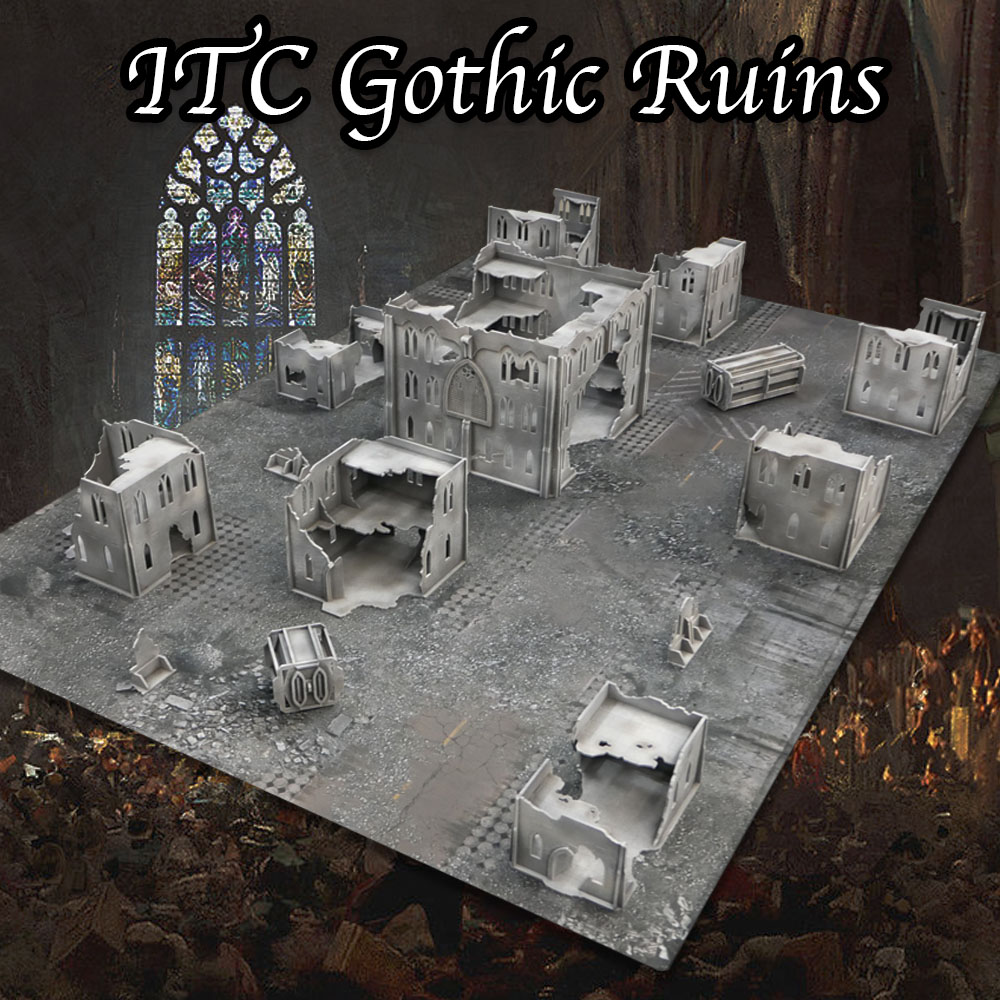
Hey everyone, Reecius here with a fun painting tutorial for our new Gothic Ruins ITC Terrain set!
You can grab Gothic Ruins ITC Terrain, here!
The Gothic Ruins ITC Terrain set is awesome for a number of reasons. For one, it looks great, especially on the Ruined City FLG Mat. For this tutorial, I painted the terrain to match that mat specifically. You could however, alter the colors and throw in some easy extras to make this set look great on any of our mats!
Materials
- Gothic Ruins: Mansion ITC Terrain kit
- Super Glue
- We find super glue is the best adhesive for MDF to get the kit built quickly and provide a sturdy bond.

- Black Primer
- We use the cheap black primer you can pick up at places like Home Depot. It works great and is very affordable as with terrain you go through this stuff at a rapid pace. We buy it buy the crate and often can get it for a few bucks a can. Just be sure to get the flat black, not the glossy which looks not good on MDF. The only way to tell is by looking at the cap. If the cap is shiny black, it’s glossy and not what you want.
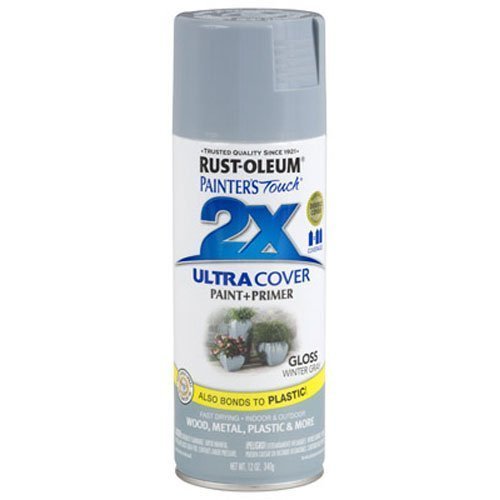
- Dark Grey, Light Grey and White spray paint.
- We use Rust-Oleum brand because it’s a nice coat of paint. However, that’s not a hard and fast rule or anything. The thing to remember with these paints though, is that they don’t dry super fast as with the primer, and if it is damp or cold when you spray it can take quite a while to dry so be mindful of that when you are working on the kits as you can easily smear the paint, get it on your clothes, etc.
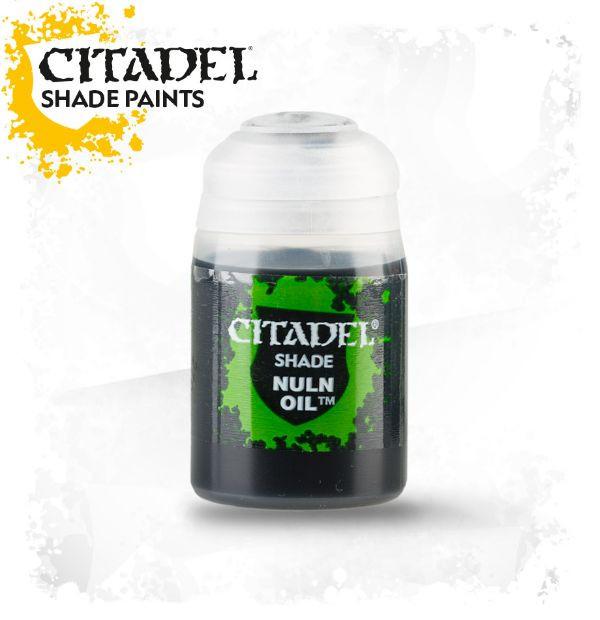
- Nuln Oil GW Shade and an Airbursh.
- If you don’t have access to an airbrush, you can get a similar effect with black paint thinned down a bit, and a stippling brush. However, an airbrush makes this so much easier and in my mind is pretty much an essential hobbying tool.
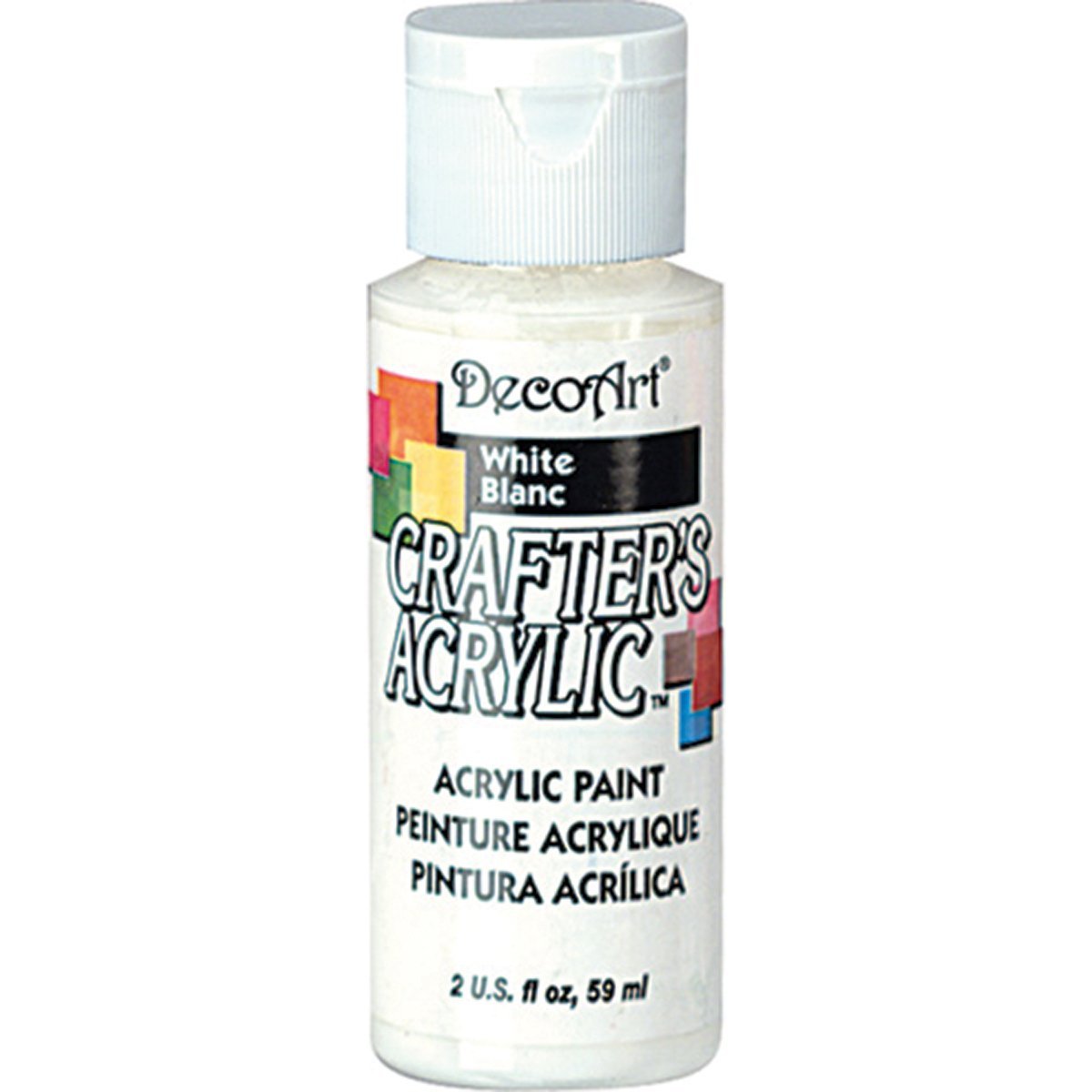
- Cheap white acrylic paint.
- You can use anything here, just grab a big squeeze bottle of the stuff as when working on terrain you go through it in a hurry.
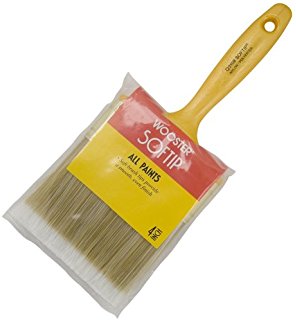
- Large, cheap drybrush.
- Again, pretty much anything will do. I grab the wide, cheap house painting brushes from Home Depot. They usually cost a couple of bucks. They eat paint as they have so many bristles but the speed they allow you to plow through terrain at makes it worth it.
Let’s get started!
- Step 1: Build and prime the terrain.
- One of my favorite things about this terrain set is how dang easy it is to get built and painted! As someone who has built and painted literally thousands of pieces of terrain, I really appreciate this. When priming it, just be sure to get it thoroughly covered as anything you miss will stick out like a sore thumb.
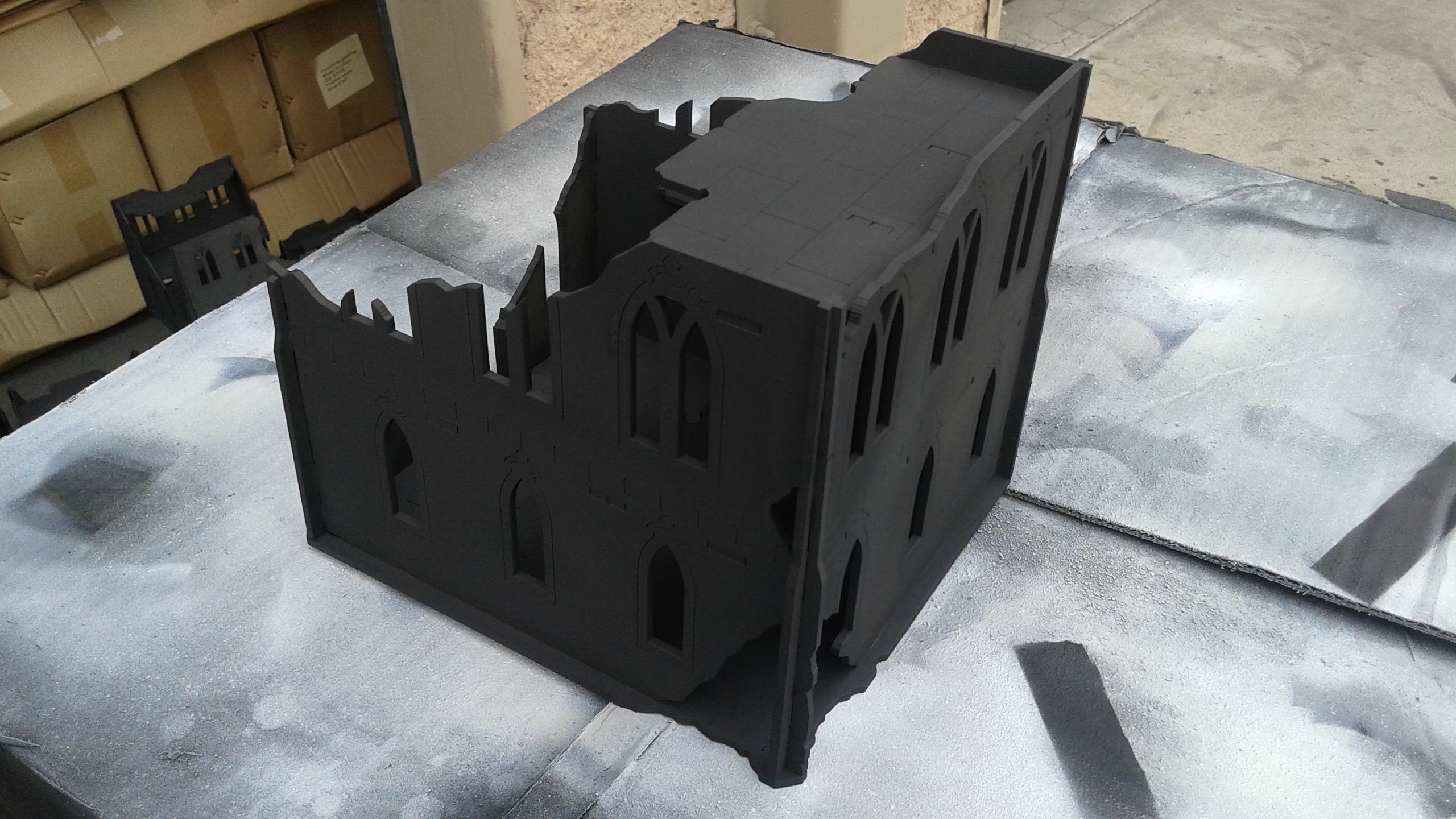
- Step 2: Spray on the dark gray base coat.
- Now, the key here is to NOT fully cover the black. You want to mostly cover it but leave some of the block showing as this creates a feeling of texture. I find the best way to do this is to spray in fast, short bursts. Move you arm across portions of the terrain in rapid arcs, with short bursts of paint. This leaves some of the black showing but gives it a mostly grey appearance as you can see in the picture below.
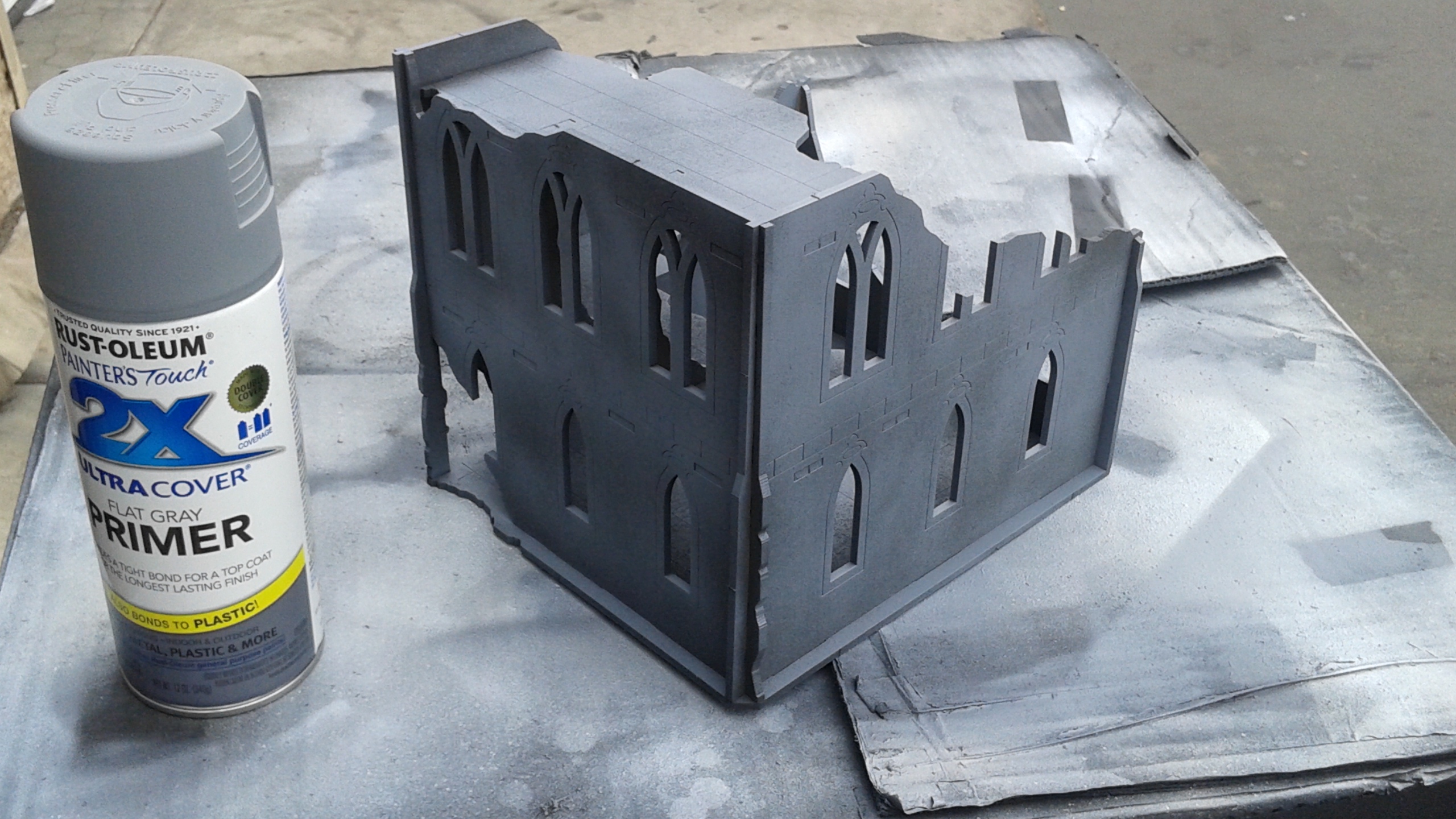
- Step 3: Spray on the light grey.
- Again, less is more here. You want to use the same technique described above, but with significantly less coverage. This gives another layer of color to the kit to give it greater depth.
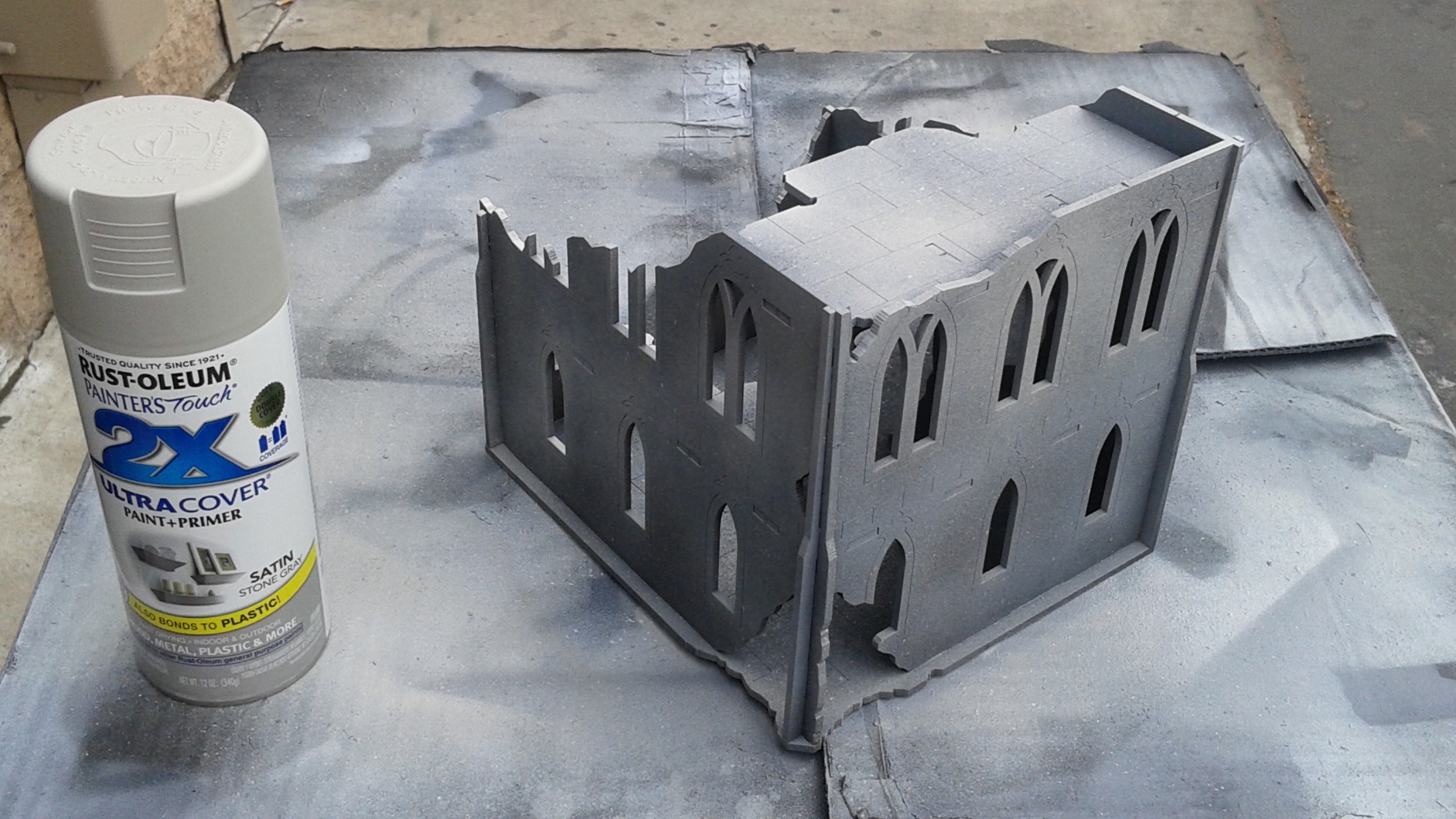
- Step 3: Spray on the white highlight.
- Same as above but with a very light touch. You want to just give it a few shots here and there with the white. Again for emphasis, you don’t want to actually spray the white on to the model but dust it with short sweeping shots of the paint. Less is more.
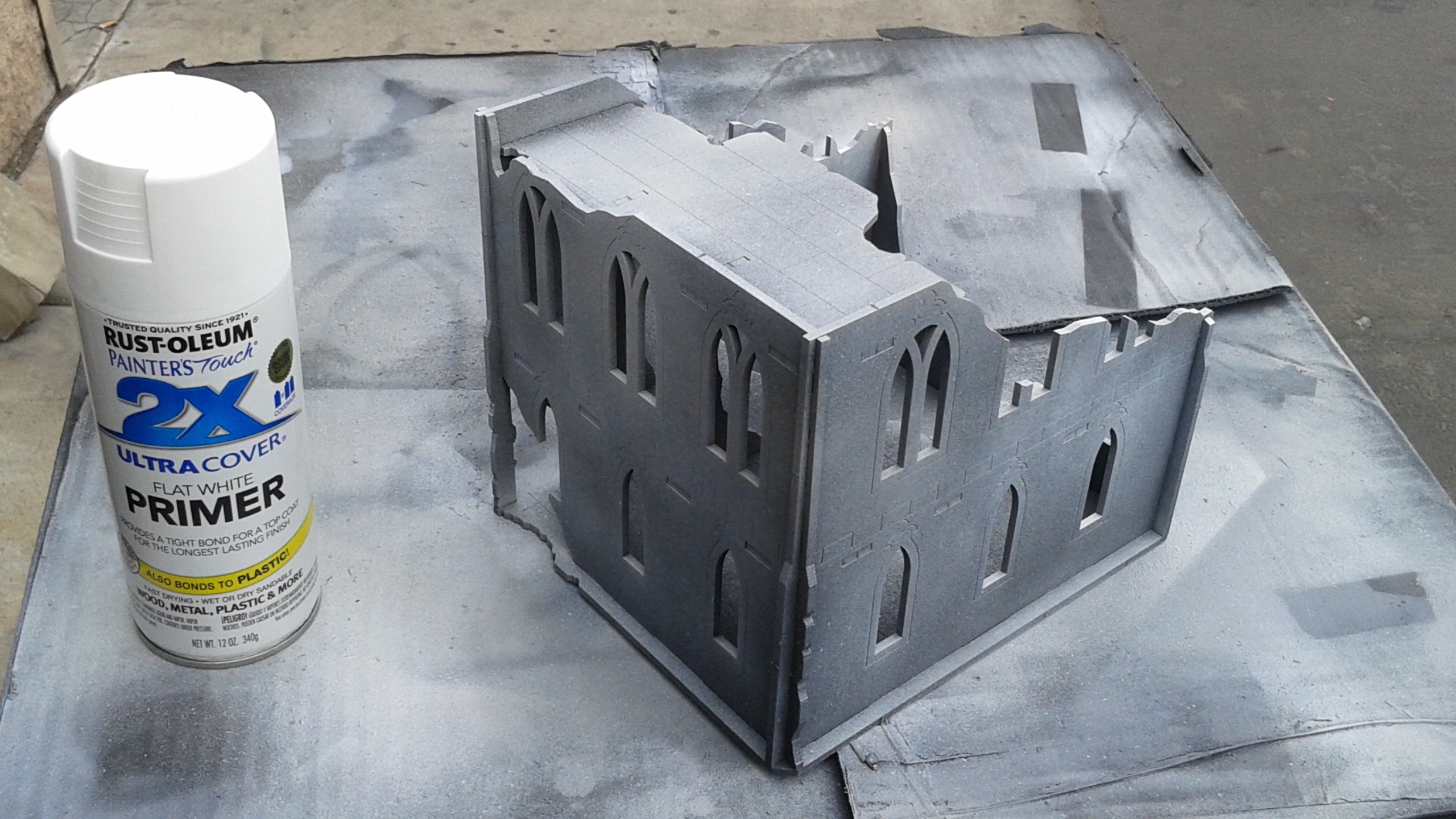
- The cool thing about this painting technique is that it goes VERY fast. I did all the buildings below in about 20 minutes. As you can see, the different colors of paint really help to make it looks nice and if you’re in a time crunch or just being lazy, lol, you can put this terrain on a tournament table at this stage and it will look passable. However, I strongly recommend taking the next two steps as it makes a huge difference!
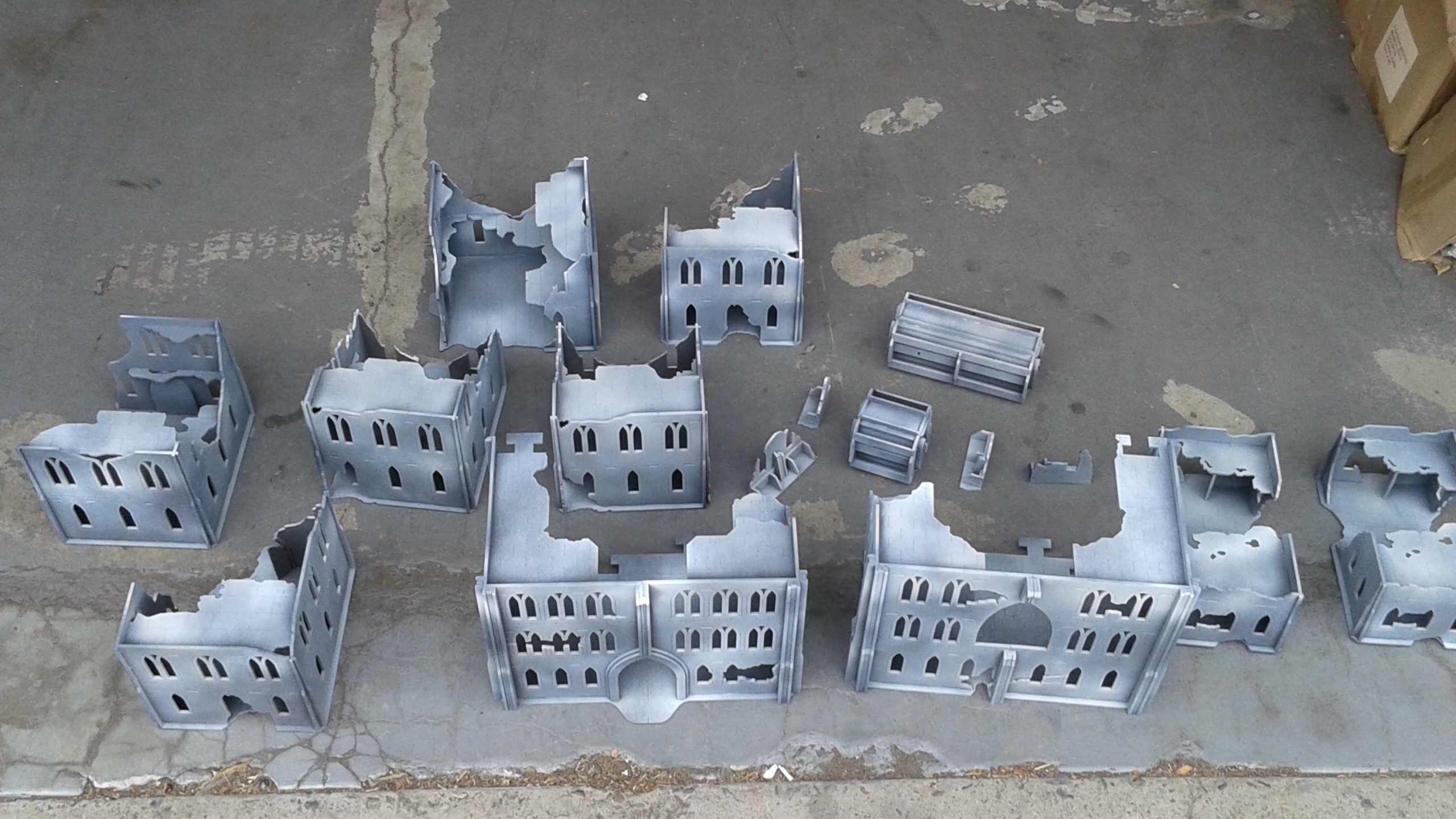
- Step 4: Shading and weathering.
- Fire up your airbrush and take your Nuln Oil, spray it in the cracks and crevices of the kit as well as along areas where the walls are broken for a nice weathered effect. Here and there spray some on the walls and under windows to simulate soot and blast marks. The picture below gives you an idea of what we’re going for but honestly doesn’t do it justice. This step really gives the kit depth and makes a huge difference in the overall appearance.
- I have also experimented with other colors such as Seraphon Sepia, Reikland Fleshshade, etc. to simulate burn and blast marks and it looks great! Also, we’ve used pigments and weathering powders to really nice effect as well if you feel like adding some extra flare to your kits.
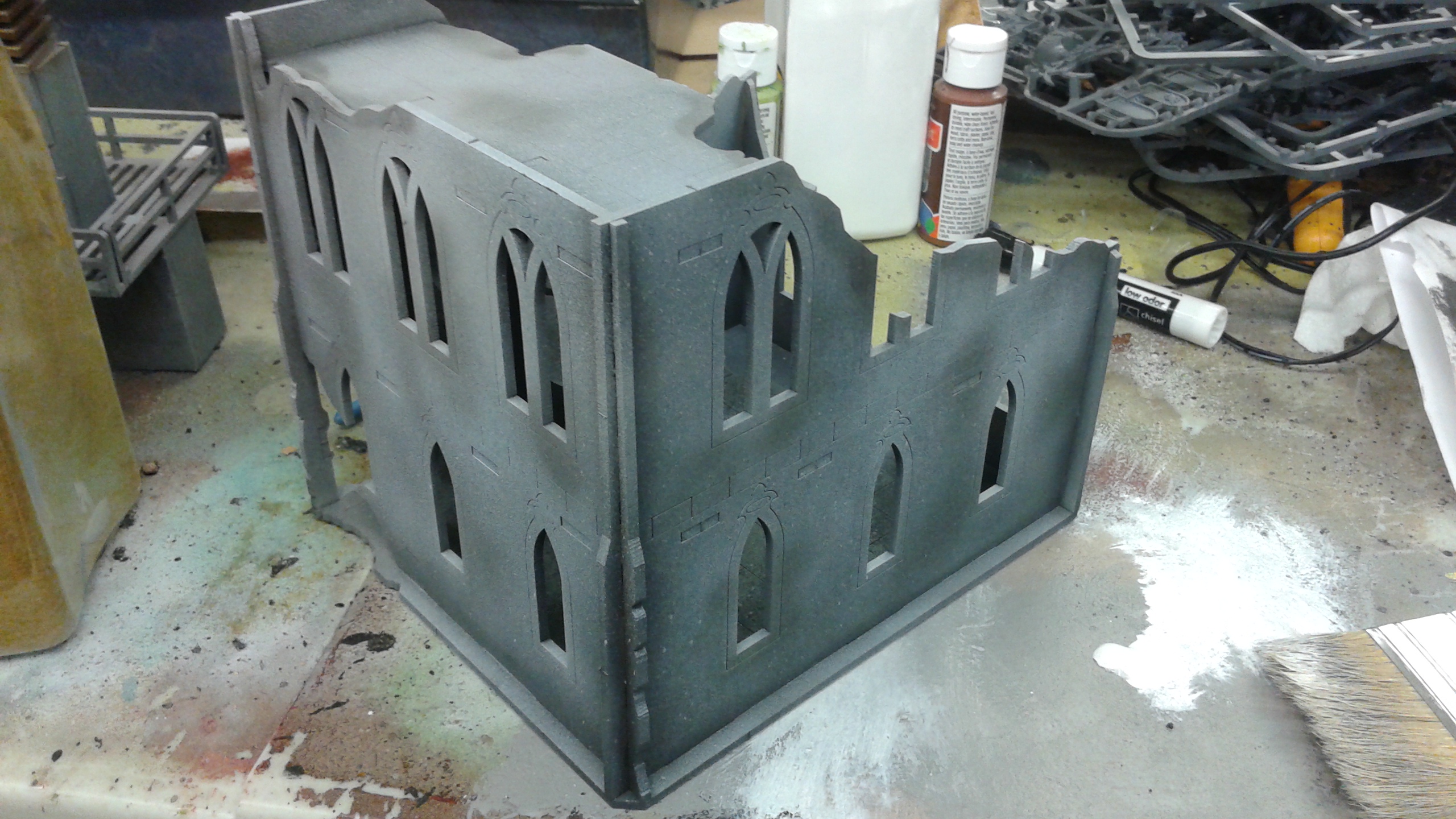
- Step 5: Drybrushing.
- Grab your big, fat drybrush and that white paint. The key to a good drybrush with terrain is to not overdo it. You want to get the brush loaded with just the right amount of paint. I find squirting a bunch of paint on a flat surface and then dipping the tip of the brush in the paint and then giving a few strokes on a test surface (on my workbench it is the workbench itself as you can see, lol) to get the majority of the paint off. You don’t want to get thick streaks of paint all over the terrain. When you’re satisfied with the level of paint on the brush, grab your kit and then in large strokes, trying to always go in the same directions (up and down or left and right) hit each side of the kit and the interior. I personally always like to go left and right with buildings as to me it feels like the wind blowing across the sides of the building and scoring it, but that is just me. The key though is to be consistent as it you drybrush in lots of different directions it looks bad. You want to focus on giving a nice texture to the flat areas and to pick up the edges of the kit as it creates a really nice look and brings all of the various layers of color you have added together. Again, this step isn’t strictly necessary but it makes a HUGE difference in the final product to really get your tables looking pro. The picture below gives you an idea of what to aim for but again, they really don’t do the real life kit justice. You will understand what I am referring to when you get to this step. It makes such a difference.
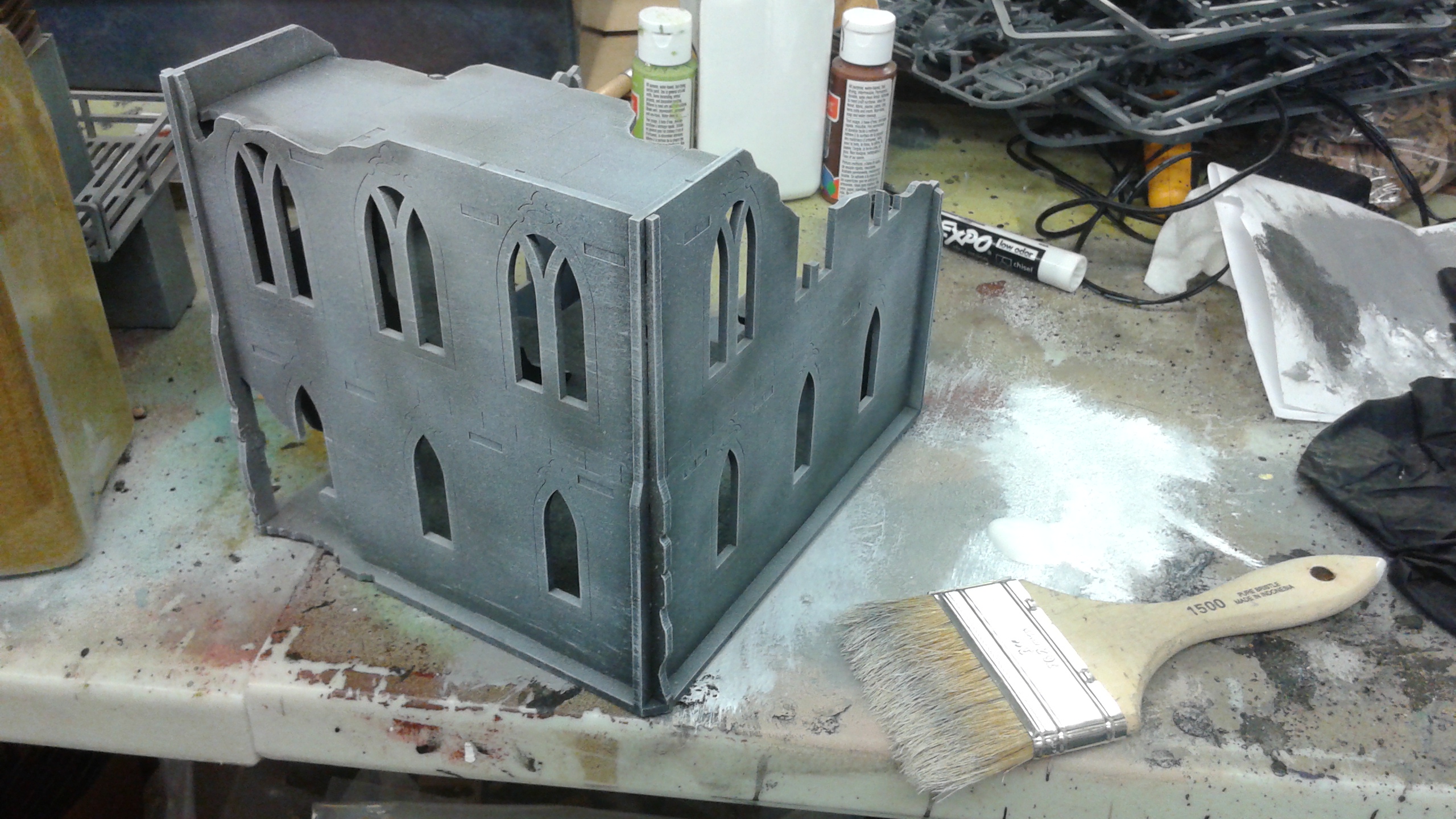
And here’s a nice picture of the finished product. As you can see, all the layers of color come together to give it a nice, natural looking texture.
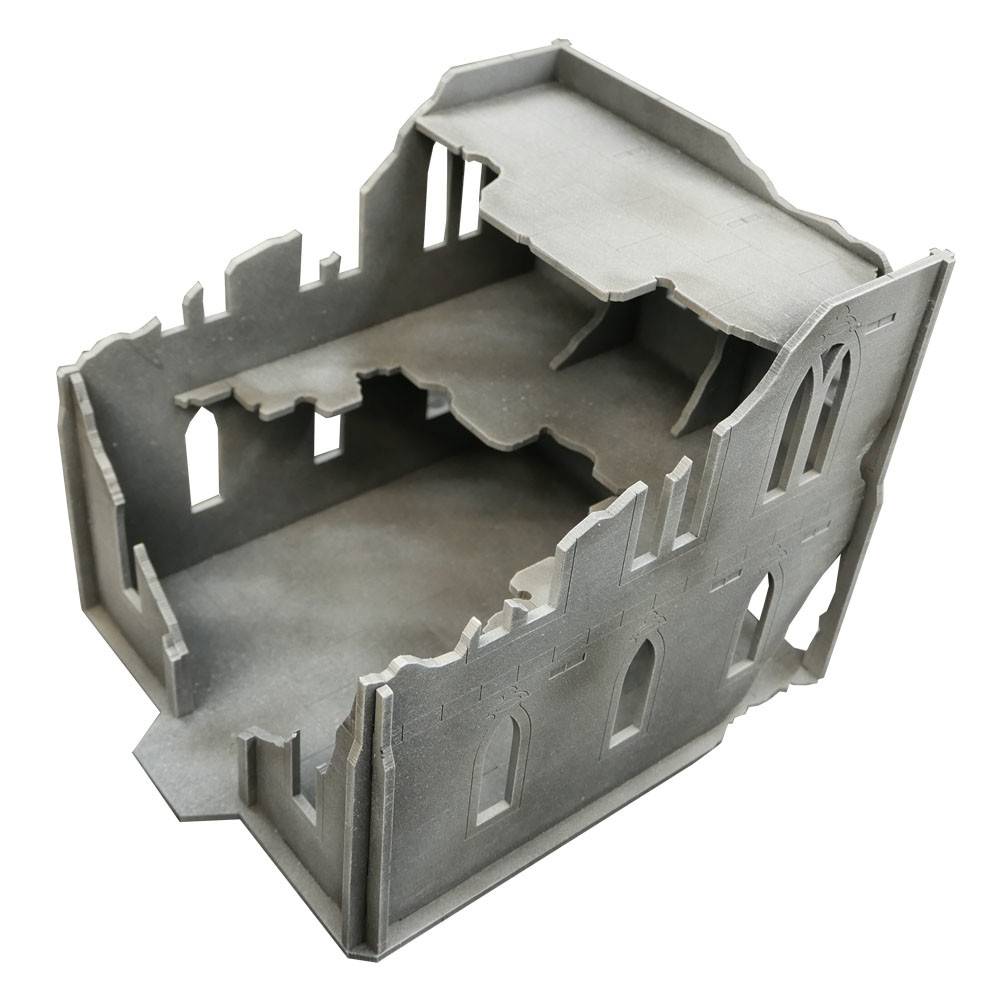
And there you have it! So easy to do and on the Ruined City FLG Mat, the colors all tie in and it looks fantastic as you can see in the pictures below.
I got all this terrain painted in about 2 hours, total. It is so quick and easy to do once you get the hang of it.

And remember, Frontline Gaming sells gaming products at a discount, every day in their webcart!




Great article Reece! 20 minutes to do a great tables worth of terrain will save a lot of time for TO’s to get some great looking terrain done in a time efficient manner, I like it!
Thanks for sharing mate! I’d love to see more of these style of articles for the other ITC Terrain lines if you guys are able to do them.
Glad you found it useful! And yeah, I will be making more of these as we go.
Damn this is awesome! Love the breakdown on how you did this. I always thought an approach like this was possible, but get paranoid about it and just go super slow and methodical when I really dont need to. This stuff all looks great. So glad this has been added to the line-up. It’d look great mixed into my collection of GW ruins as well to bulk the collection up to a full Cities of Death board. Love it!
I am the same way but when you make the amount of tables that we do, you have to go as fast as possible. To prep for the LVO we need to make almost 10 tables of terrain a week, every week until the event! There’s no time to be too detail oriented, you just strike a balance between speed and aesthetics.
Other than this one and the Orc Terrain tutorial do any other ones exists currently?
There is one more and another on the way. I should index them.